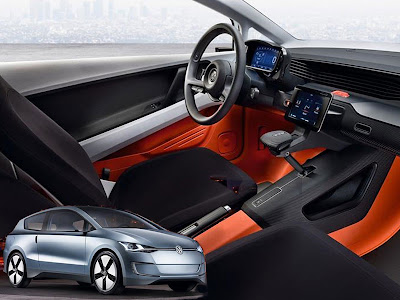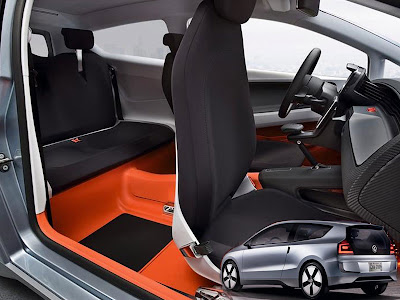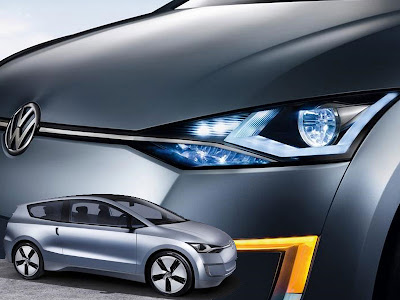Suzuki Swift, 2005



A new kind of compact car. A new philosophy and a new beginning.
Radical innovation: The story behind the new Suzuki Swift
Suzuki recently embarked on a radical new programme of innovation: a mission aimed at reaffirming and strengthening Suzuki's position as a compact-car innovator; a mission destined to yield vehicles embodying the unique DNA of a company that's not only a world leader in compact cars but also the world's dominant force in motorcycles.
The motoring public's first view of Suzuki's new way forward came at the 2002 Paris Motor Show, where Suzuki unveiled the Concept-S, a racy, rally-inspired concept vehicle that reflected influences from Suzuki's two- and four-wheel racing activities and combined the benefits of Suzuki's racing heredity with cutting-edge technological features.
Next to emerge from Suzuki's new programme was the Concept-S2, an open-top sports car in which Suzuki evolved its new-model concept into a form with a more laid-back personality. Unveiled at the 2003 Frankfurt Motor Show, the Concept-S2 was dimensionally similar to the new-generation production vehicle toward which Suzuki was steadily working - a vehicle to be known as the new Suzuki Swift.
Plans for the new Swift took shape around a totally new mindset: Whereas Japanese car development often focuses first on the needs of Japanese motorists, the designers and engineers assigned to the new Suzuki Swift focused first and foremost on Europe; the new Swift was to be a Japanese car developed in Europe for today's global market.
Exterior design
A head-turning fusion of dynamism and stability
Suzuki's exciting new direction in car design is instantly apparent in the exterior styling of the new Swift.
In contrast to the monoform styling adopted for many vehicles in the supermini category, the new Swift has a 1.5-box style that communicates an unmistakable sense of dynamism and substantiality; it consistently earned praise among European motorists who collaborated with the design programme.
A distinctively sporty front face incorporates clear headlamps and a wide airdam that not only suppresses front-end lift but also looks dynamic and stylish. And a stance that conveys a strong sense of stability is created by large-diameter wheels positioned near the extreme corners of the body and by boldly contoured shoulder lines that run from the headlamps to the rear of the body.
A wraparound glasshouse gives the upper half of the new Swift's body a bold, sporty look and helps to imbue the cabin with an appearance of solidity. The wraparound glasshouse design is complemented by a black finish on the A- and B-pillars for an even smarter, more integrated look.
At the sides of the new Swift, clearly defined shoulder lines are complemented by boldly flared wheel arches and side sills that further emphasize the car's strength and stability. The shoulder lines flow toward rear combination lamps that curve forward to meet them above the rear wheels, creating a uniquely solid, sporty, and well-integrated look.
Interior design
A cockpit designed for true driving pleasure
Inside the new Swift, the driver enjoys an environment that reflects a focus on style, sportiness, and driving pleasure.
The wraparound look of the glass surfaces is continued in the cabin design, creating not only a chic look but also a feeling of involvement with the car and confidence in it. Sporty features including a three-spoke steering wheel, a spherical shift knob, and an illuminated ring around the speedometer make driving even more enjoyable.
The top of the instrument panel is positioned optimally low to give the driver a clear view forward. This means the driver enjoys a feeling of openness and finds the new Swift easy to place accurately on the road. The overall result is confident, enjoyable driving with a satisfying feeling of involvement.
Instrumentation that promotes easy, enjoyable driving includes a sporty, easy-to-read triple-gauge instrument cluster in which the tachometer dial, in a reflection of sportbike design, has its mark positioned at six o'clock, where the eye falls naturally. It also includes a centrally located information display that shows the time, fuel consumption, and outside temperature.
The audio and climate-control systems are easy to operate thanks to optimally large, dial-type controls. For added convenience, the audio system can also be operated using optional steering-wheel-mounted controls.
The front seats offer superior support and hold, and each one has a class-leading fore-aft slide range of 240mm. Plus, the driver's seat has a height adjuster with an up-down range of 30mm. A tilt-adjustable steering column further accommodates for every driver. Even a relatively small person can easily find the optimal seating position for confident driving and easy pedal operation.
And throughout the driver's area, gaps and height differences between trim pieces are tight and accurate, further contributing to an overall sense of refinement and quality.
Newly conceived systems for next-generation ride and handling
With the new Swift, Suzuki's chassis engineers targeted a dynamic driving experience together with a ride that feels sophisticated and comfortable. They achieved this difficult balance by integrating the body with a newly developed platform incorporating specially conceived chassis systems.
The newly developed platform provides the new Swift with wide treads (front: 1470mm, rear: 1480mm), a great overall width (1,690mm), and a long wheelbase (2,380mm). These dimensions not only benefit interior spaciousness but also help to enable superior on-road stability and comfort.
The front suspension has a new design in which the lower arms, steering gearbox, and rear engine mounting are attached to a suspension subframe. This design gives significantly higher mounting rigidity, which translates into lower road noise and a stronger feeling of stability.
The new Swift breaks further new ground by being equipped with torsion-beam rear suspension, which gives a superior combination of handling stability and ride comfort. One specific merit of the new arrangement is low unsprung weight, which enables camber angle and toe-in to be controlled effectively for accurate and predictable handling. Another merit is a space-efficient layout that permits a low, flat luggage-area floor.
To further enhance the driving experience, the power-assisted steering system has a newly developed steering gearbox that gives a more direct feel. And for further controllability, the braking system has an upgraded design in which increased caliper rigidity and other enhancements give sure stopping power.
Class-leading protection from collisions and theft
Peace of mind for users is always a top priority for Suzuki, so the new Swift incorporates the latest technologies for safety and security.
Developing the body from scratch enabled the engineering team to realize an outstandingly crashworthy structure; one in which high-tensile steel and tailored blanks are used extensively to ensure lightness and strength. It also enabled the team to adopt structures (notably in the bonnet, fenders, wipers, and front bumper) that help protect pedestrians in the event of contact.
In the cabin, users are further shielded from impact forces by a collapsible steering column, leg-injury-mitigating brake and clutch pedals, front-seatbelt pretensioners and force limiters, energy-absorbing trim, front airbags, and available side and curtain airbags.
To help ensure that none of the advanced passive-safety technologies is ever needed, the new Swift incorporates a range of active-safety technologies including a four-wheel antilock braking system, an electronic brake-force distribution system, and a brake-assist function, which together help the driver avoid hazards.
And to give users even greater peace of mind, exemplary protection from theft is realized by a keyless start system (this permits keyless unlocking, engine startup, and locking), an immobilizer, and Suzuki's latest tamper-resistant door locks.

 A redesigned Swift was announced at the Paris Auto Salon in September 2004. This Swift is intended to compete in the European B segment with the likes of Peugeot 206, Opel Corsa and the Fiat Punto. With 1.3 and 1.5 L engines, the new Swift is Suzuki's new "global car", to be produced in Hungary, India, Japan and by Chang'an in China. 3- and 5-door bodies.
A redesigned Swift was announced at the Paris Auto Salon in September 2004. This Swift is intended to compete in the European B segment with the likes of Peugeot 206, Opel Corsa and the Fiat Punto. With 1.3 and 1.5 L engines, the new Swift is Suzuki's new "global car", to be produced in Hungary, India, Japan and by Chang'an in China. 3- and 5-door bodies.





































